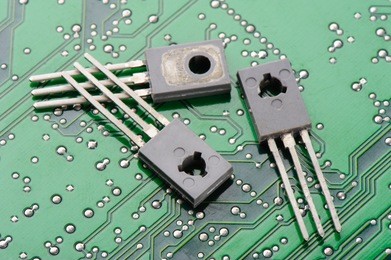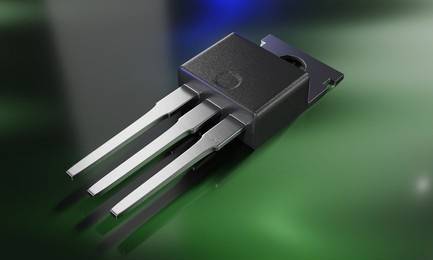Transistors are fundamental semiconductor devices that play a crucial role in modern electronics. These tiny electronic components act as switches, amplifiers, and signal modulators, allowing for the precise control and manipulation of electrical currents. The word "transistor" is a combination of "transfer" and "resistor," which signifies their function of transferring an electrical signal from one circuit to another.
At their core, transistors are made of semiconductor materials, such as silicon or germanium, and consist of three layers: the emitter, the base, and the collector. These layers are either of P-type (positive) or N-type (negative) material, and the arrangement of these layers determines the type of transistor. There are two primary types of transistors: NPN (Negative-Positive-Negative) and PNP (Positive-Negative-Positive).

What is NPN Transistor?
In an NPN transistor, the outer layers are made of N-type semiconductor material, and the inner layer is P-type. When a small current flows from the base (middle layer) to the emitter (outer layer), it allows a larger current to flow from the collector to the emitter. This mode of operation makes NPN transistors suitable for amplification and switching applications.
What are PNP Transistors?
PNP transistors are essentially the opposite of NPN transistors. In a PNP transistor, the outer layers are P-type semiconductors, and the inner layer is N-type. When a small current flows from the base to the emitter, it allows a larger current to flow from the emitter to the collector. PNP transistors also find applications in amplification and switching but exhibit different characteristics.

Differences between NPN Transistor and PNP Transistor
- Polarity of Charge Carriers:
The primary difference lies in the polarity of charge carriers within the transistor. In an NPN transistor, the majority of charge carriers are electrons (negative charge), while in a PNP transistor, the majority of carriers are holes (positive charge).
- Symbol Representation:
NPN and PNP transistors are represented differently in circuit diagrams. An NPN transistor is depicted with an arrow pointing away from the base terminal, while a PNP transistor is shown with an arrow pointing toward the base terminal.
- Direction of Current Flow:
In NPN transistors, the conventional current flows from the collector (positive) to the emitter (negative), while in PNP transistors, it flows from the emitter (positive) to the collector (negative).
- Operation Mode:
NPN transistors are typically used for applications where the base-emitter junction is forward-biased, allowing current to flow from the emitter to the collector. This mode is called the "on" state. PNP transistors operate in the "on" state when the base-emitter junction is reverse-biased, allowing current to flow from the emitter to the collector.
- Switching and Amplification:
NPN transistors are commonly used for switching applications and amplification of signals, particularly in digital circuits. PNP transistors are also used for switching and amplification but with reverse logic. When the base-emitter junction is reverse-biased, the transistor is in the "on" state.
- Voltage Polarities:
NPN transistors are suitable for applications where the collector voltage is higher than the emitter voltage. PNP transistors are used when the emitter voltage is higher than the collector voltage.

Transistors are used in countless electronic devices and applications, from computers and smartphones to amplifiers and microcontrollers. They enable the precise control of electrical signals, making them the building blocks of the modern electronic world. Understanding the differences between NPN and PNP transistors and when to use each type is essential for designing effective electronic circuits. If you are interested in our transistors, feel free to contact us!

